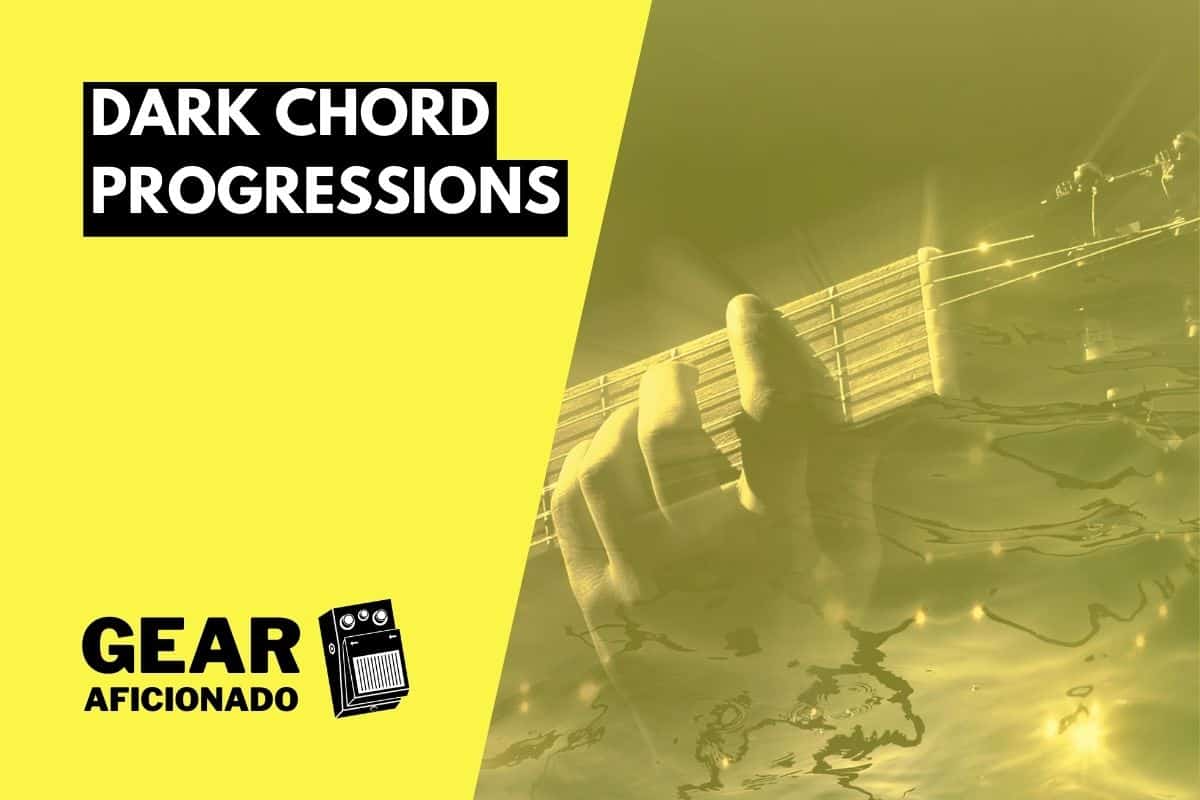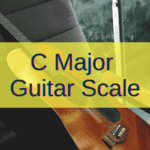Don’t go up the stairs! It’s a trap! Yes, we’ve all seen the quintessential movie scene in which the main character goes up the stairs while the killer is trying to end his or her life. Well, although it is a common scene, do you know what chords to play to make the right soundtrack for that kind of fear-inspiring video recording?
In case the answer is no, don’t be scared; at least not until you start playing our spooky chords and learn all the secrets to turn your six-stringer into a fear-inducing machine.
These are the darkest, scariest chord progressions to haunt a house or bring the chills to your audience.
Ready to be scared? Well, bring that popcorn and your guitar because the train to the darkest side of music departs right now.
All aboard!
Spooky Chords
It all starts with some spooky chords. Yes, certain note combinations can have the precise effect of scaring people off. We’ve dug down the lost documents found in Count Dracula’s castle and brought you some of the best, scariest, deadliest chords around.
Beware, though, these are powerful combinations of strings that might make more than one person get the chills. So, use them wisely and avoid playing them for the faint of heart.
Emb6
This chord was Angelo Badalamenti’s secret weapon when he wrote the universally famous Twin Peaks soundtrack. There’s something about the sixth that’s just spooky. Moreover, if you mix that spooky ingredient with the kind of sad sound a minor chord brings to the mix, the result is a chord that’s ready to introduce one of David Lynch’s highest points in a stellar career.
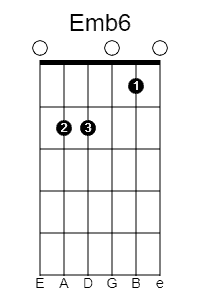
As a tip, try moving back and forth from the minor, the seventh, and this chord with an arpeggio. You’ll find yourself in utterly familiar territory.
Emadd9
This chord uses the 9th note of the scale (or the second, depending on how you count) to add some spooky flavors to the mix. The second note of the Em scale is F#, therefore we have to add an F# to our already-scary Em chord.
You can try adding that F# in different frets, but, in my opinion, the scariest version is the one you’ll find next.

As guitarists, we’re faced with more than one limitation when it comes to notes and chords because we have to either stretch or find notes somewhere comfortable rather than having seven octaves to play with like pianists do.
For those who play guitar and synth, try adding the low F# to the mix and feel the chills crawl up your spine.
EaugM7
This is such an unsettling chord; you’ll be seeing the hallways of an abandoned haunted hospital and the hair in your body will stand up and scream for help. Yes, there’s something about the augmented minor seventh chord that’s just not concluding, but leaving the listener trapped in a sense of uncertainty that you can always use to present a scary character.
All you have to do is build a chord using two augmented third intervals (4 half-steps) and then add the seventh note to the equation.
My suggestion? Play it as an arpeggio, and in the chord of the example, add the open high e string to the mix for an extra dose of “scary sound”
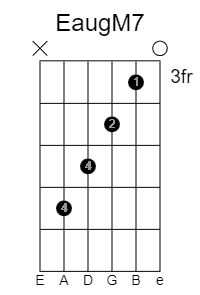
Dbmaj13/Bb
This is a chord I’m very proud of because it came out of my imagination. You see, the year was 2003 and I was super into Nü Metal, a very, very scary and dark style of music (except for Limp Bizkit, which means party in Nü Metal language).
I was going into the studio with my band at the time and we had this killer track with heavy guitars and some screaming vocals. The song was great, but it needed a cool, scary chord to get things started and make people pay attention.
So, I was fooling around with 9th chords and happened to add the perfect note to turn an otherwise happy-sounding chord into the scariest thing I’ve ever come up with.
Without further ado, let me introduce you to the almighty Dbmaj13/Bb chord, a one-of-a-kind spooky creation by yours truly.
Oh, in case you’re wondering, we got into a fight in the middle of the recording sessions and the record never made it out.
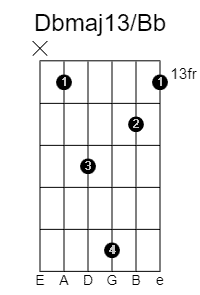
The Tri-tone Trick
Besides the chords above, there’s a trick you can perform that can help you create a dark, spooky ambiance with your music. Yes, there’s a chord change that’s called the “Devil’s Note” or, for a less spooky experience, a Tritone.
But how do you move a tritone away from the original note? Well, for us guitarists is very simple, just move six frets down the fretboard and find that minor Devil’s tone you’re looking for.
This works with any chord in any position of the guitar. Furthermore, you can stack tritones on top of each other and come up with the scariest chord succession in history.
Let’s try it with a couple of chord sequences.
Try playing these chords on your guitar:
Again, use this resource with measure so you won’t scare the people around you so much.
Cultivating Dissonance
Dissonance is the name of the game if you want to scare people off. Yes, when it’s all about major chords and common intervals, there’s no room for despair, magic, and fear. Therefore, we need to break that common ethereal thread that holds progressions like I – IV – V together.
But how do we do this?
Well, if there’s something we can learn from the spooky chords is that they introduce a scary element to a known sound. Therefore, we need to get that odd element in the mix.
A good way to start trying in that path is to add a note that’s a semi-tone away from the tone proposed by the scale we’re using for the song. For example, if you have to play a B major in the scale of C major, try going for an A# and see what happens.
Remember, there’s no right or wrong, just scary or odd.
Mind the Tempo
There’s a common belief that says that to make people dance, what you need is a tempo of 120 bpm. But do you want to make people dance or scare them off their chairs? Well, to provide an extra-creepy environment for your scary chords in your scary chord progression, use a tempo that’s half the dancing speed: 60 bpm.
Moreover, there’s a sweet spot for these scary tunes that can always be found between 60 and 80 bpm.
So, once you’ve written your progression, try it at 70 bpm and move it up or down depending on what you want to achieve.
Also, the use of slow arpeggiation emphasizing the odd, scary, dissonant note of the chords is a great way to throw some steroids to the scary mix.
Voicings and Instrumentation
Creating a dark atmosphere requires a certain selection of instruments, chords, and, above all, tones. Yes, if you bring a bright telecaster to the mix to play scary chords with a whole lot of twang, then you’re going to very likely break the spell you’ve created with the chords.
So, try keeping things dark by using the old, forgotten tone knob on your guitar (yes, it’s useful to darken the tone). Also, try to stick with ambience-rich effects like reverb, delay, some echo, and a slow modulation effect of your choice.
Layers
Another great aspect of my favorite dark songs is that they are usually made stacking a layer of darkness above the next. Don’t fear dark sonic landscapes when it’s time to make people scared: the thicker the layers, the scarier the tune.
11 Dark Chord Progressions
- I – VII – iv – v
- i – III – VII – IV
- v – VI – v – VI – v – VI – v – iv – I – VI – I – VI
- i – VII – VI – v
- i – i – III – IV
- i – VII – VI – iv – v – iv – v
- i – III – VII – iv – I – III – VII – VI
- i – VII – i – VI – III – VI – III
- i – VI – VII – i
- i – iii
- I – biii – bVII – IV
The Bottom End
Writing scary material is a challenge because our ears naturally want to resolve the tension. Yes, whenever you play any dominant seventh chords or play several minor chords together, your mind and hands will want you to break the spell and run to brighter sonic territory and major chords.
Well, the effort is to stay within the scary territory and create a solid story-telling set of chords to lay a nice melody on top without breaking the haunting dark spell.
If you get lost in the way, just use one of our spooky chords, and you’ll remain in spooky land.
Happy (fear-inducing) playing!

Hello there, my name is Ramiro and I’ve been playing guitar for almost 20 years. I’m obsessed with everything gear-related and I thought it might be worth sharing it. From guitars, pedals, amps, and synths to studio gear and production tips, I hope you find what I post here useful, and I’ll try my best to keep it entertaining also.

